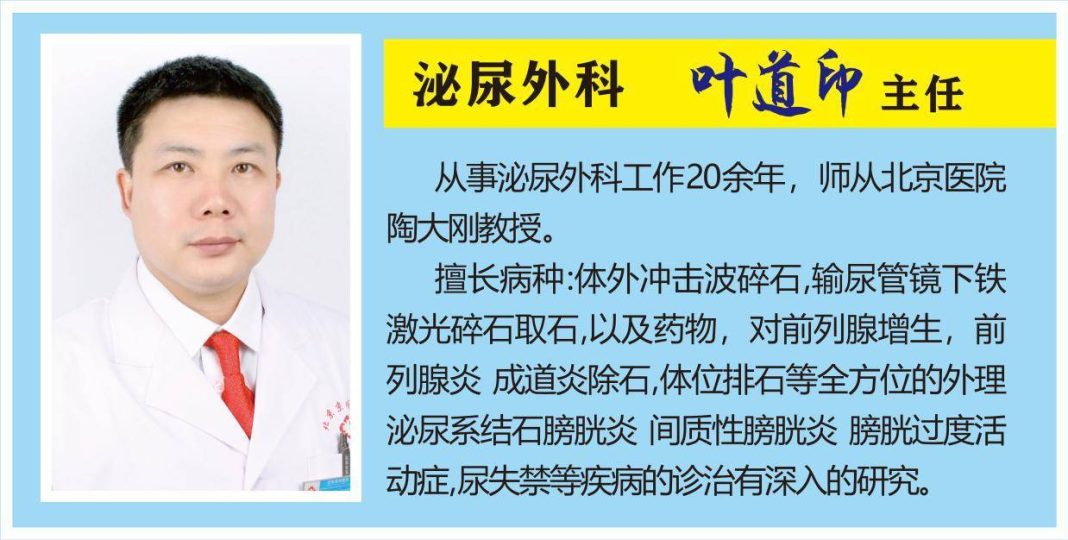The prostate is the largest accessory gland in the male body, resembling a chestnut. It plays important roles in secreting prostatic fluid, maintaining male physiological functions, and controlling urination. Prostate hyperplasia, that is, prostate enlargement, can lead to a series of abnormal urination symptoms in men. The sites of hyperplasia are usually concentrated in the gland’s stroma and acinar components. What causes prostate hyperplasia, and what are the treatment methods? Let’s hear from Director Ye Daoyin.
There are four main factors that can trigger prostate hyperplasia:
First is the age factor. As men get older, the probability of developing prostate hyperplasia significantly increases.
Second is prolonged sitting. This can lead to pressure on the prostate, poor blood circulation, and over time may cause prostatic congestion, subsequently leading to hyperplasia.
Third are unhealthy lifestyle habits. Chronic alcoholism, excessively frequent sexual activity, etc., may also lead to excessive congestion of the prostate, thereby triggering hyperplasia.
Fourth are disease factors. Patients suffering from prostatitis, cystitis, urethritis, and other diseases may also experience concurrent prostate hyperplasia.
Prostate thermal vapor ablation treatment is currently recognized internationally as one of the most advanced minimally invasive surgical methods for prostate hyperplasia. It has advantages such as minimal trauma, short duration, high safety, and rapid recovery. The surgery takes only 5 to 8 minutes. The principle involves injecting sterile steam at 103°C into the hyperplastic prostate tissue through a guiding needle via the urethra, causing the hyperplastic tissue to gradually lose vitality and subsequently undergo apoptosis and necrosis. Within 1 to 3 months post-surgery, the necrotic hyperplastic tissue gradually shrinks or falls off and is expelled with urine, thereby forming a natural passage in the prostatic urethra, relieving urinary obstruction, and addressing a series of symptoms such as frequent urination, urgency, and difficulty in urination.
Compared to traditional prostate hyperplasia surgeries, thermal vapor ablation preserves the patient’s normal urethral structure, allowing for better protection of urinary control and sexual function. The surgery is brief, resulting in less pain and bleeding for the patient, and some patients can opt for local anesthesia. It is suitable for all patients with prostate volumes ranging from 30 to 80ml, especially for elderly high-risk patients suffering from prostate hyperplasia, particularly those with multiple chronic diseases and high surgical risks, as well as those wishing to retain sexual function.
Prostate hyperplasia is a common condition among men, and while there is no need for excessive worry, it should not be entirely ignored. After a diagnosis, patients should actively cooperate with doctors for treatment to prevent further development. Jing Shun Hospital’s urology department offers prostate thermal vapor ablation technology to protect the health of elderly men in the Shunyi area.


